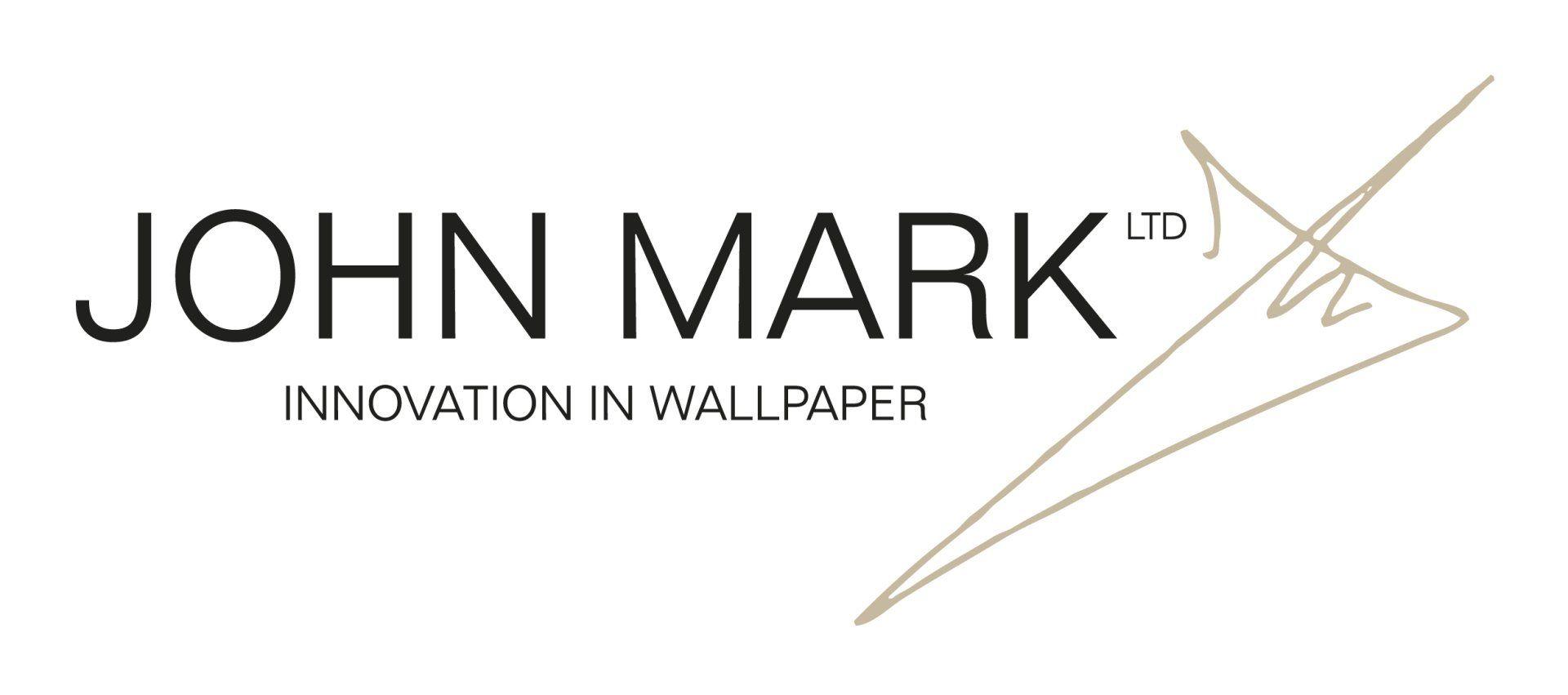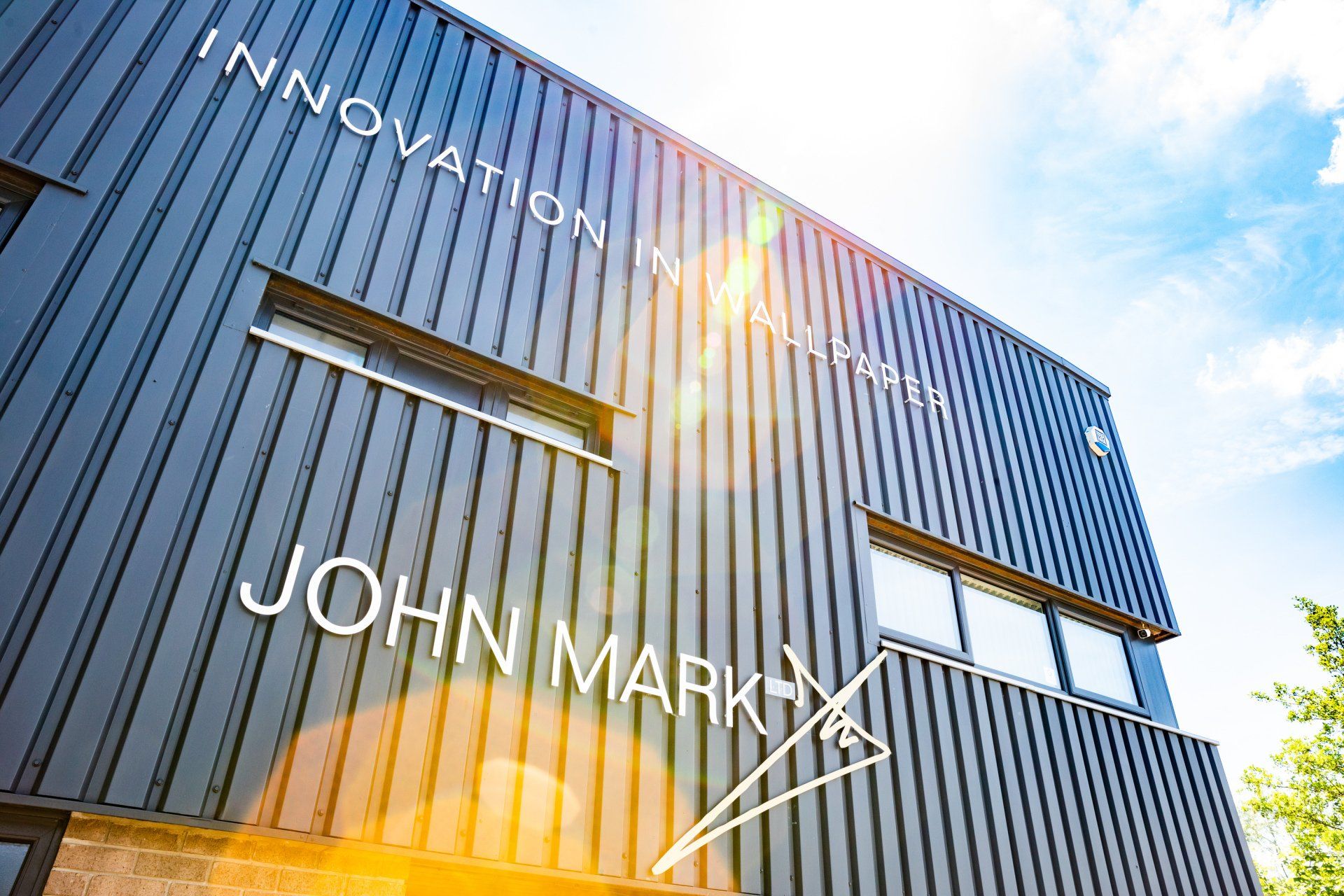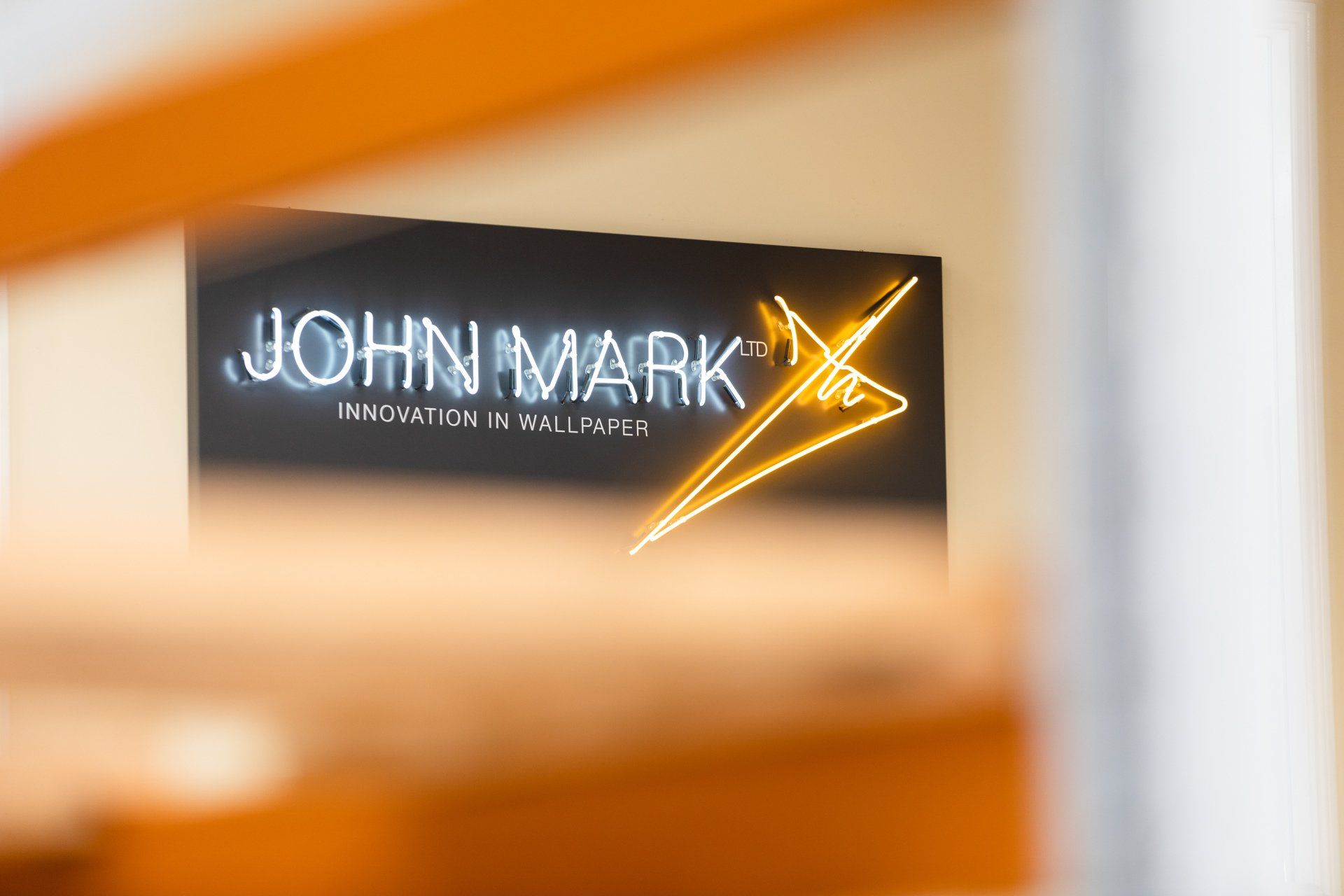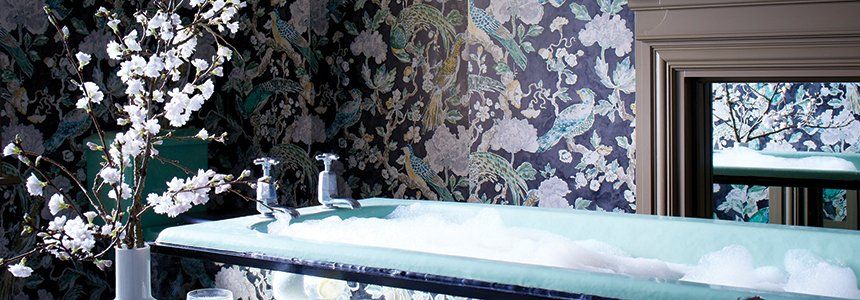Interview with Printing News - LOVIN LATEX
Big "L" or Little "l"
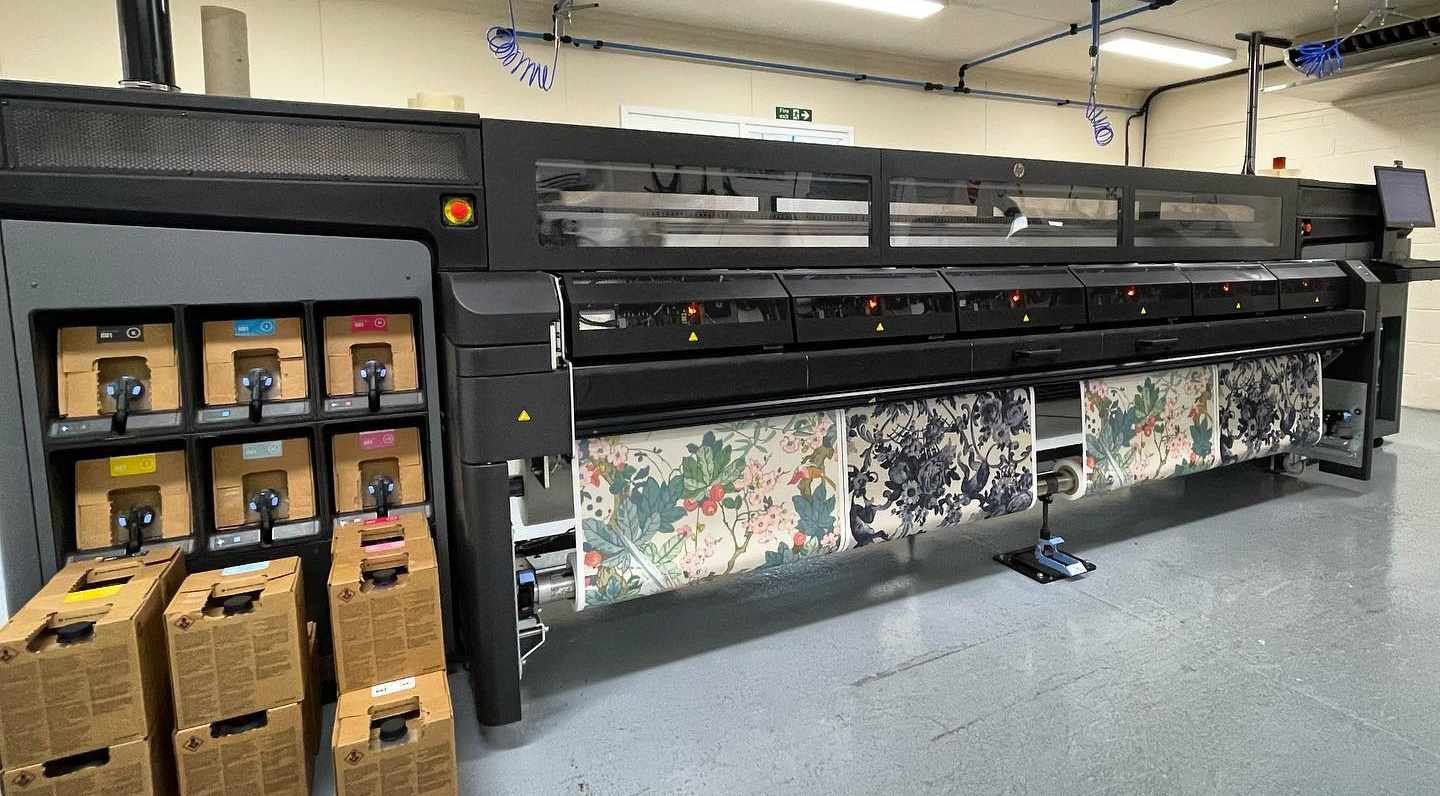
“Wallpaper” can include a wide variety of substrates, including domestic grade non-woven wallpapers, foils and lenticular wallpapers, commercial grade vinyl wallpaper, natural wallpapers such as Grasscloths, cork, and raffia. (Image courtesy John Mark Ltd)
When HP launched its Latex series of wide-format printers in 2008, it offered a highly flexible alternative to solvent printers, as Latex units could print on a wide variety of materials, including textiles, in the days before dye sublimation was demystified. The ability to print on vinyls and other rollfed media as well as fabrics gave shops a lot of versatility in the kinds of applications they could produce, and in my interviews with display graphics providers over the years, it was not uncommon to hear one or more Latex machines referred to as a “workhorse.” At the same time, the odorless, water-based inks provided a greener solution to solvent and UV inks.
Last winter, when HP updated its Latex line, they identified the primary Latex application areas they track, notably décor, packaging, soft signage, fleet graphics, retail, events and PVC banners and billboards. So…most everything.
Big or Little “L”
A point of clarification when it comes to terminology, and the difference between “Latex” and “latex.” Wikipedia defines “latex” as the “stable dispersion (emulsion) of polymer microparticles in an aqueous medium.” Latex can be natural or synthetic and many plants exude a natural latex. Synthetic latexes are used in gloves, balloons and many other products—like inks. Most readers probably know this by now, but just for the record: latex inks are perfectly safe for people with latex allergies.
Latex printing is virtually synonymous with HP’s Latex (capital L) line of printers, and HP does have the most extensive portfolio, including a relatively new flatbed unit for Latex printing on rigid materials. Mimaki and Ricoh have also long offered latex (small l) wide-format machines, and last year Epson launched its SureColor R Series which uses what it refers to as “resin-based” ink, which is a water-based “latex-like” ink. The launch of the series was meant to offer the same substrate flexibility as latex. Whether the term “Resin” will resinate (resonate) the way Latex did remains to be seen.
Off-the-Wall Ideas
One of the earliest “killer apps” for latex printing was wallcoverings and décor, and many wall décor producers still predominantly prefer latex. One such company is the UK-based John Mark Ltd (https://www.johnmark.co.uk).
“We have always used digital printing HP Latex technology to produce luxury wallcoverings for the design community,” said Matt Fletcher, commercial manager for John Mark. “Since opening, we’ve worked closely with HP to develop the presses that are on market today.”
Founded in 2012 and based in Leyland, Lancashire, in the north of England, John Mark Ltd. specializes in digitally printed wallpaper. Founder John Mark Watson comes from a family that has been making wallcoverings in Lancashire since the 1800s, and he recognized in 2012 that digital printing was ready to compete with legacy processes.
At present, the company is a virtually all-Latex shop, with six HP1500s, one HP800 W and two HP 570s for sampling and short-run work. They have orders in for additional Latex units, “including the large-format spot white machine, which will supersede the HP800 W once HP releases this new model, which is due to be available spring 2022,” Fletcher said.
John Mark works with a wide variety of end clients, from world famous home décor brands, interior designers, graduate designers, textile designers, hobbyists, crafters and artists.
“Anyone can try out wallpaper printing, as the costs to have designs produced start from approximately £35 per 10-meter roll,” said Fletcher.
And what they mean by “wallpaper” can include a wide variety of substrates, including domestic grade non-woven wallpapers, foils and lenticular wallpapers, commercial grade vinyl wallpaper, natural wallpapers such as Grasscloths, cork and raffia, and more recently peel-and-stick wallpapers for the rental market.
“What drove John Mark Ltd to HP was the print mark, color gamut, eco-friendly properties of the water-based ink system, and most importantly reliability,” said Fletcher. “Back when John Mark Ltd opened in 2012, the only digital printing options available were UV-cured and ecosolvent machinery which didn’t have the decorative finish of the HP Latex inks, so HP Latex was the only option considered.”
And the company hasn’t looked back since.
“Wallpaper” can include a wide variety of substrates, including domestic grade non-woven wallpapers, foils and lenticular wallpapers, commercial grade vinyl wallpaper, natural wallpapers such as Grasscloths, cork, and raffia.
The Nose Knows
Although substrate flexibility is perhaps the biggest advantage of Latex, Fletcher cites another asset
“HP’s eco-friendly water-based inks don’t have an odor/de-gassing like UV-cured and ecosolvent,” he said.
An interview with Printing News :
https://www.printingnews.com/wide-format-signage/article/21154748/lovin-latex
New Paragraph
Contact us
Find us
84 Bison Place Moss Side Ind Est, Leyland, PR26 7QR
Business hours
- Mon - Fri
- -
- Sat - Sun
- Closed
